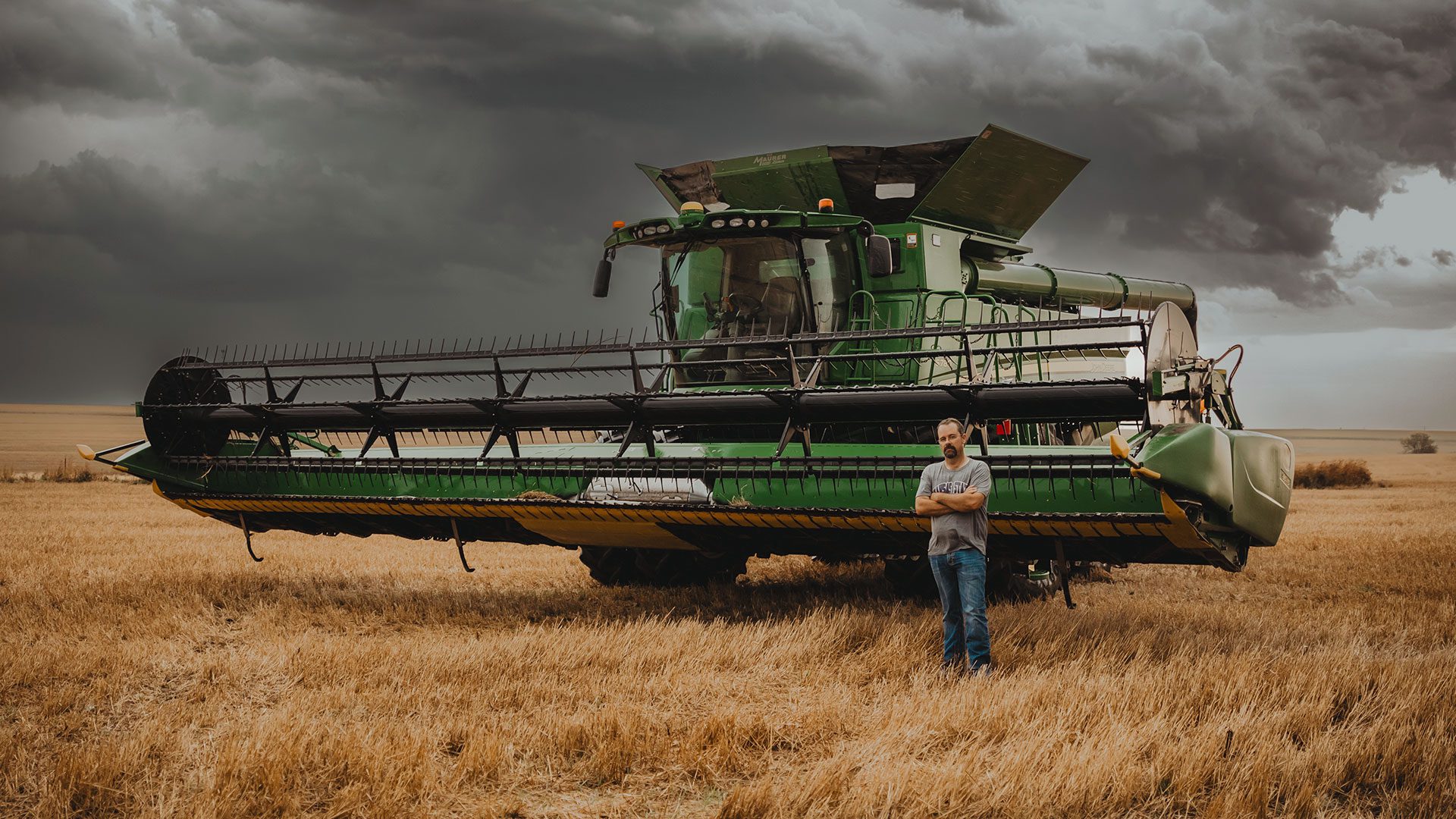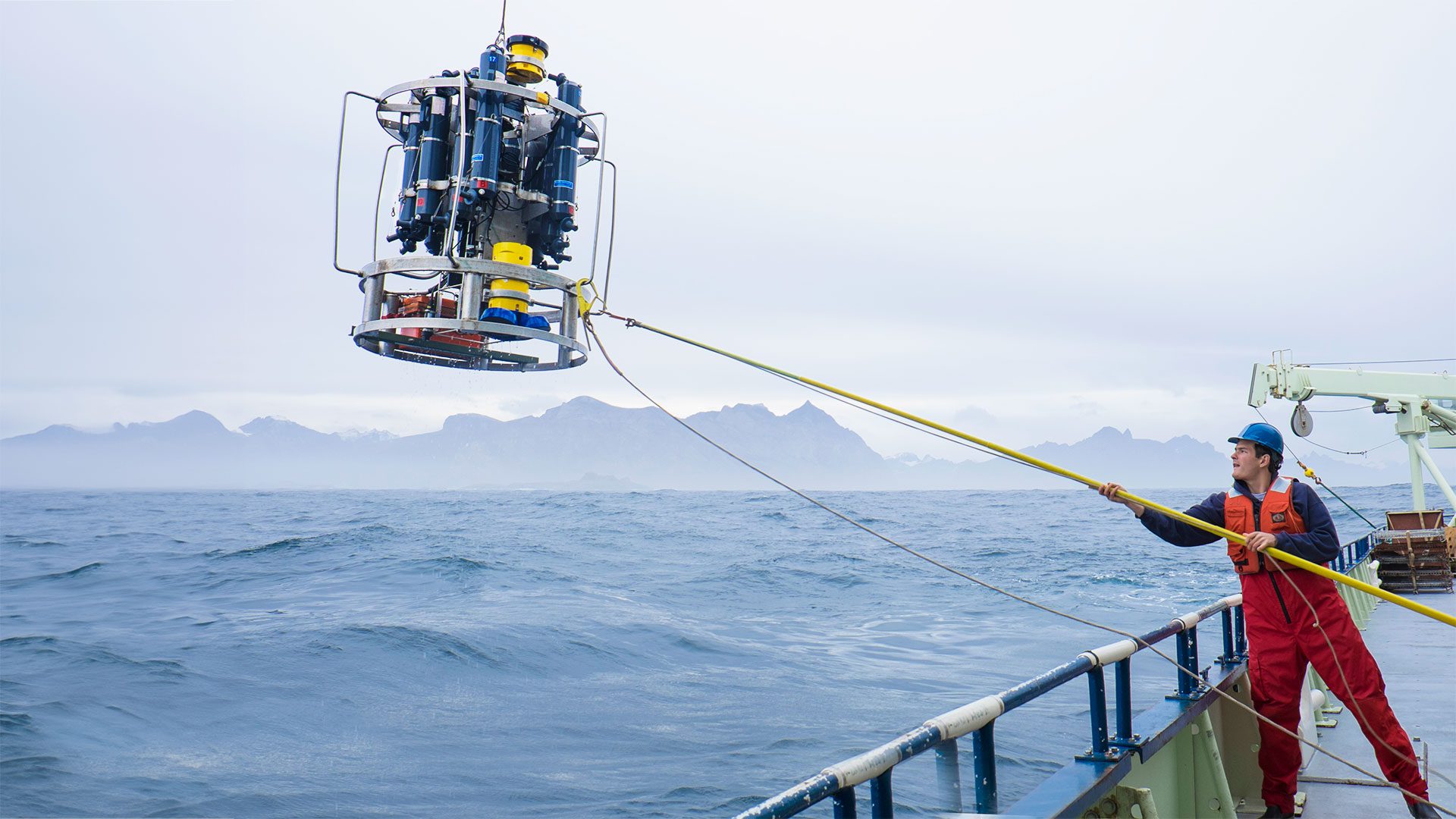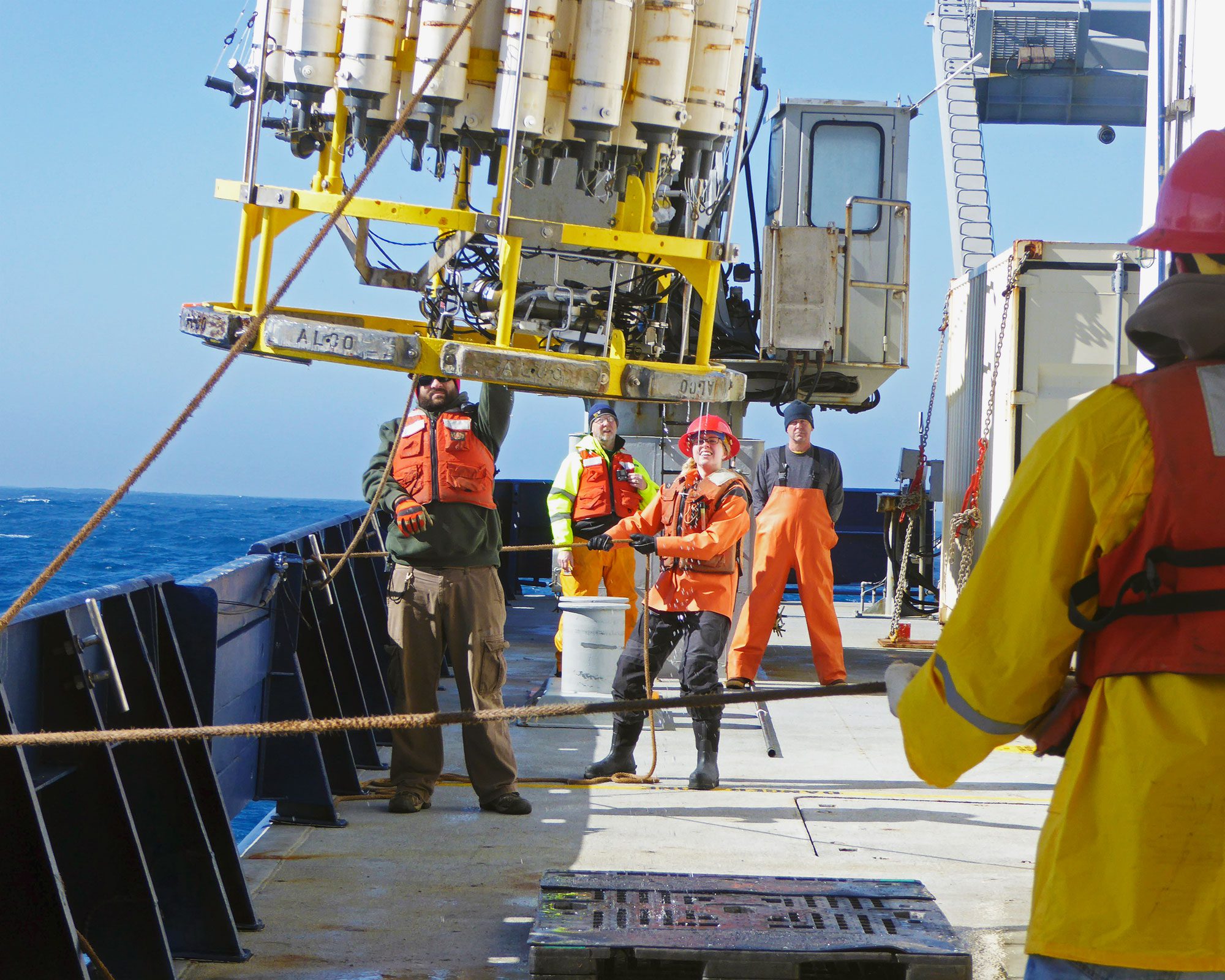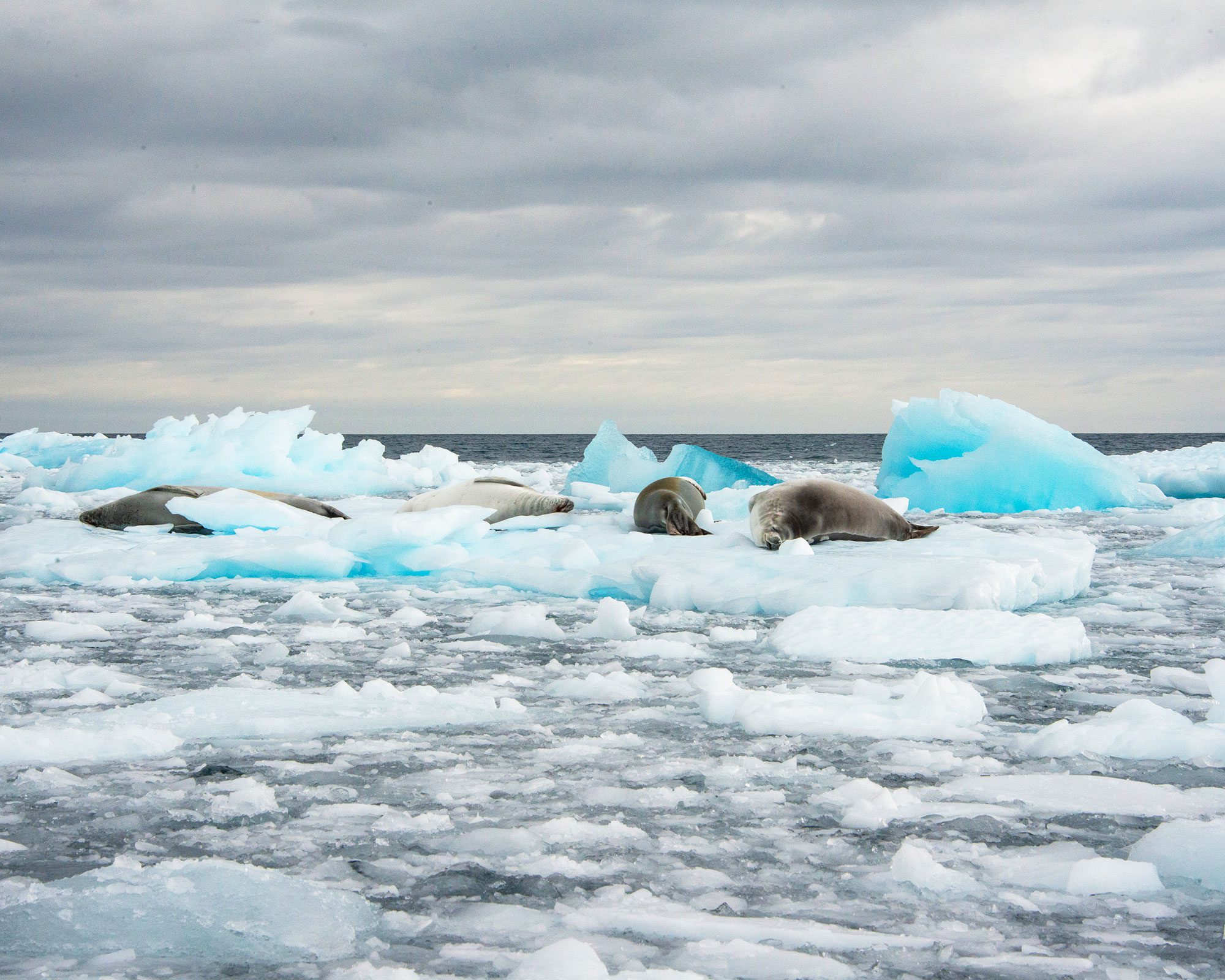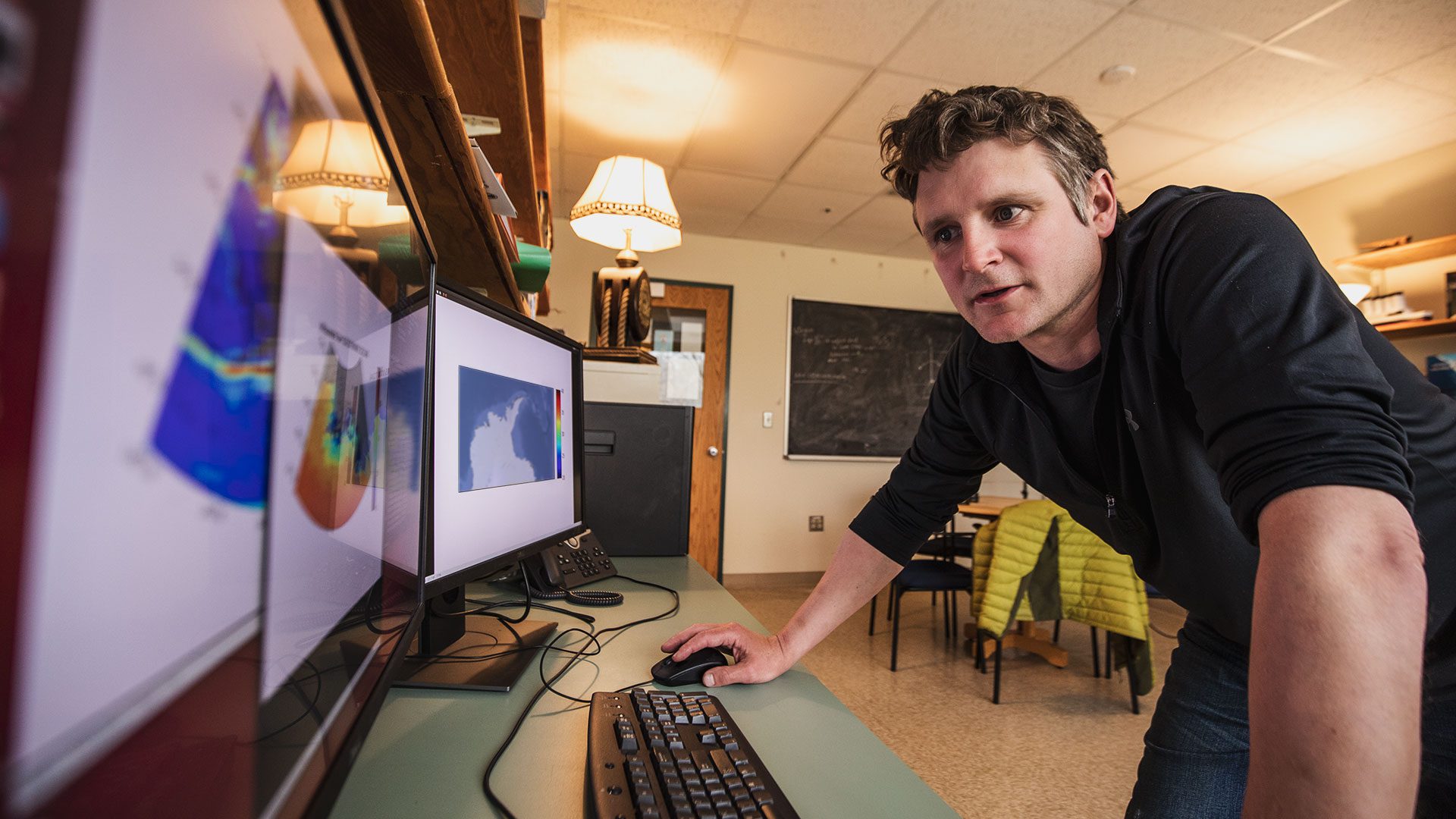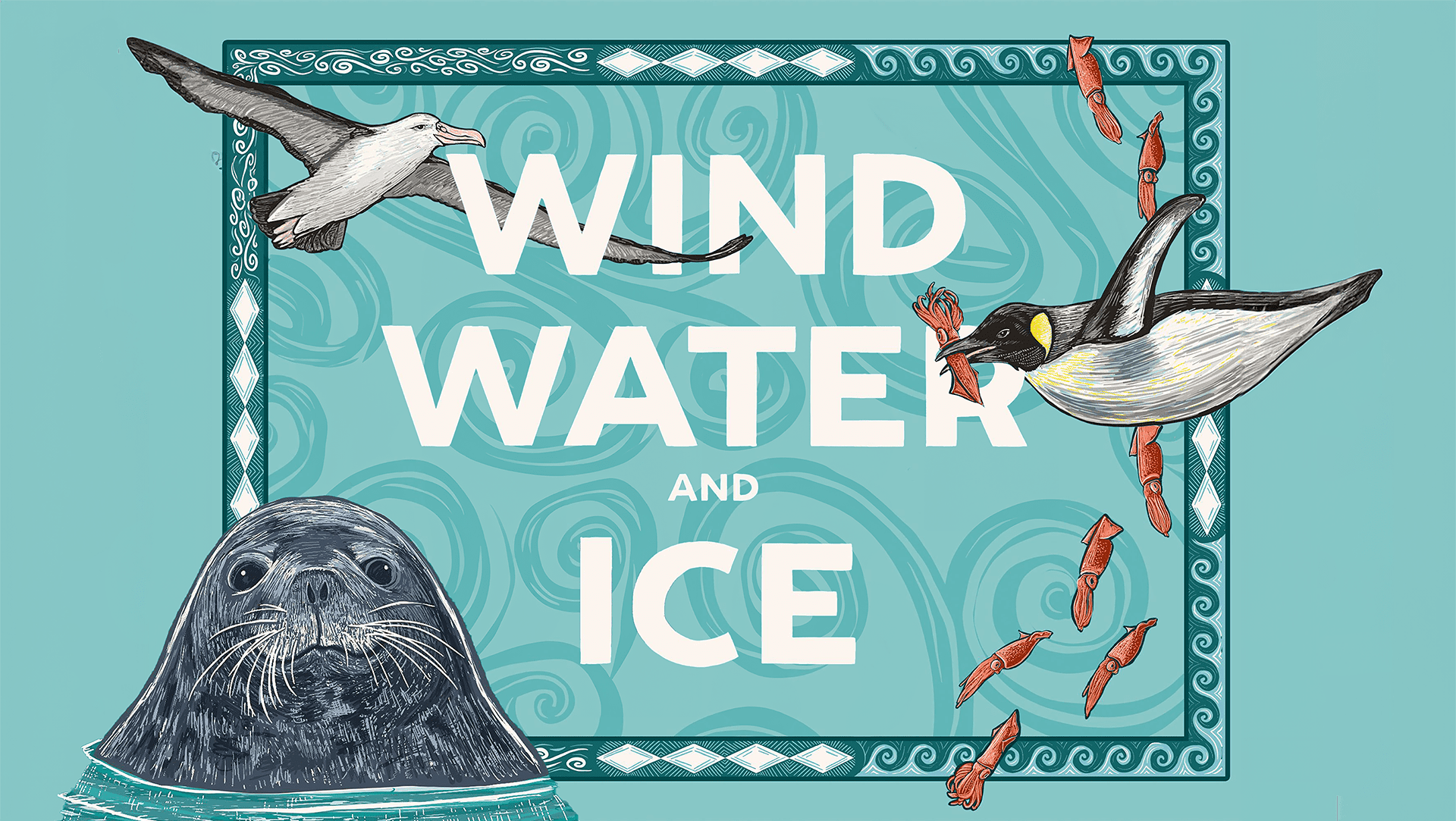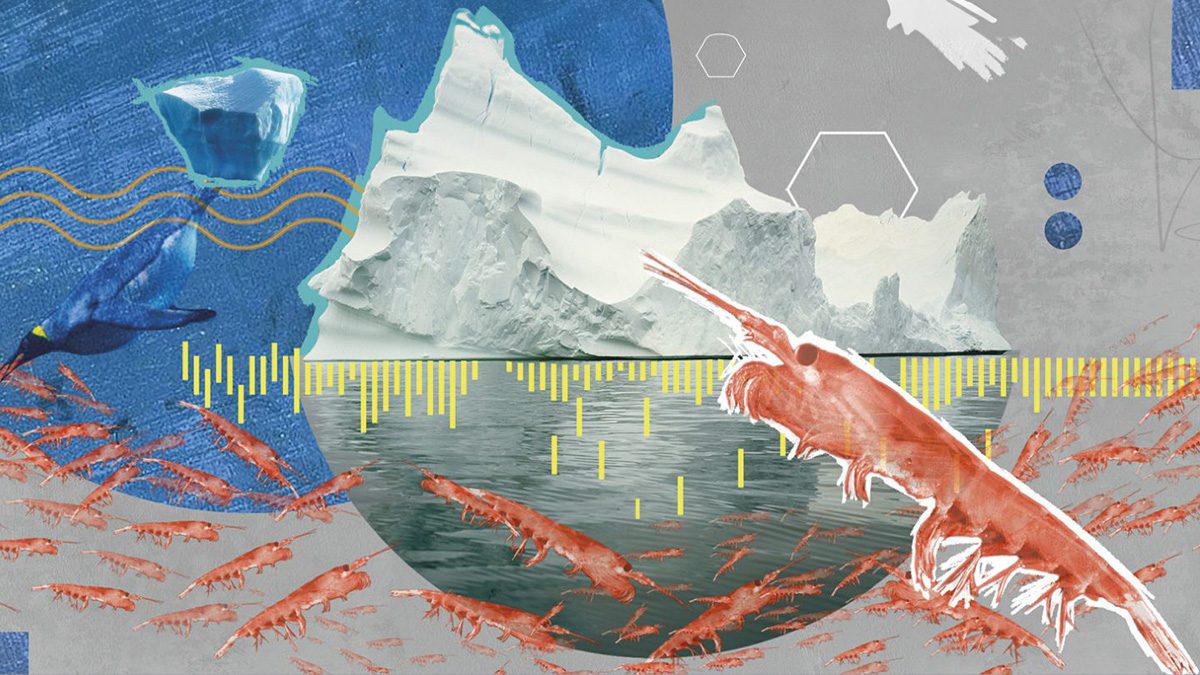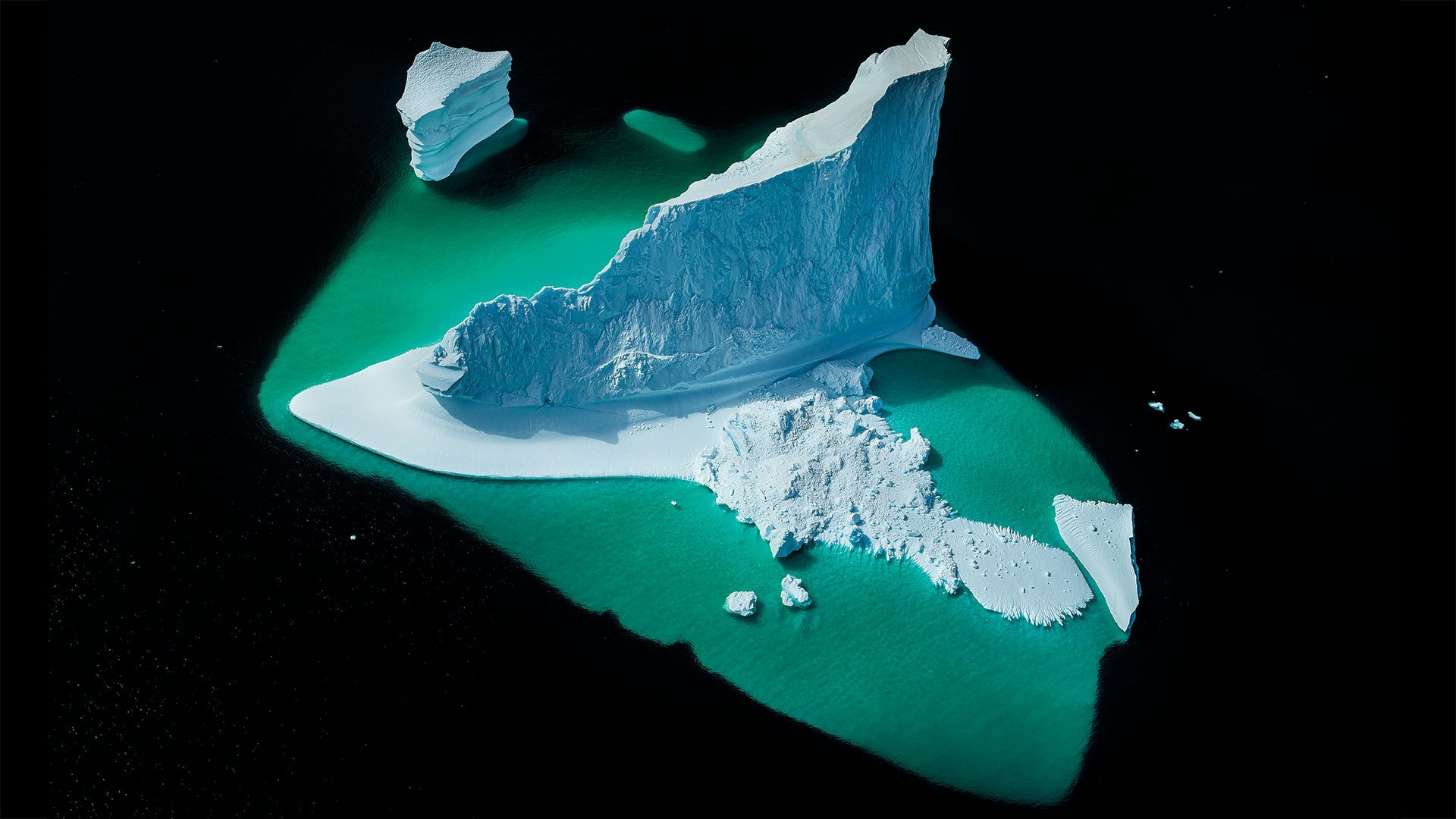
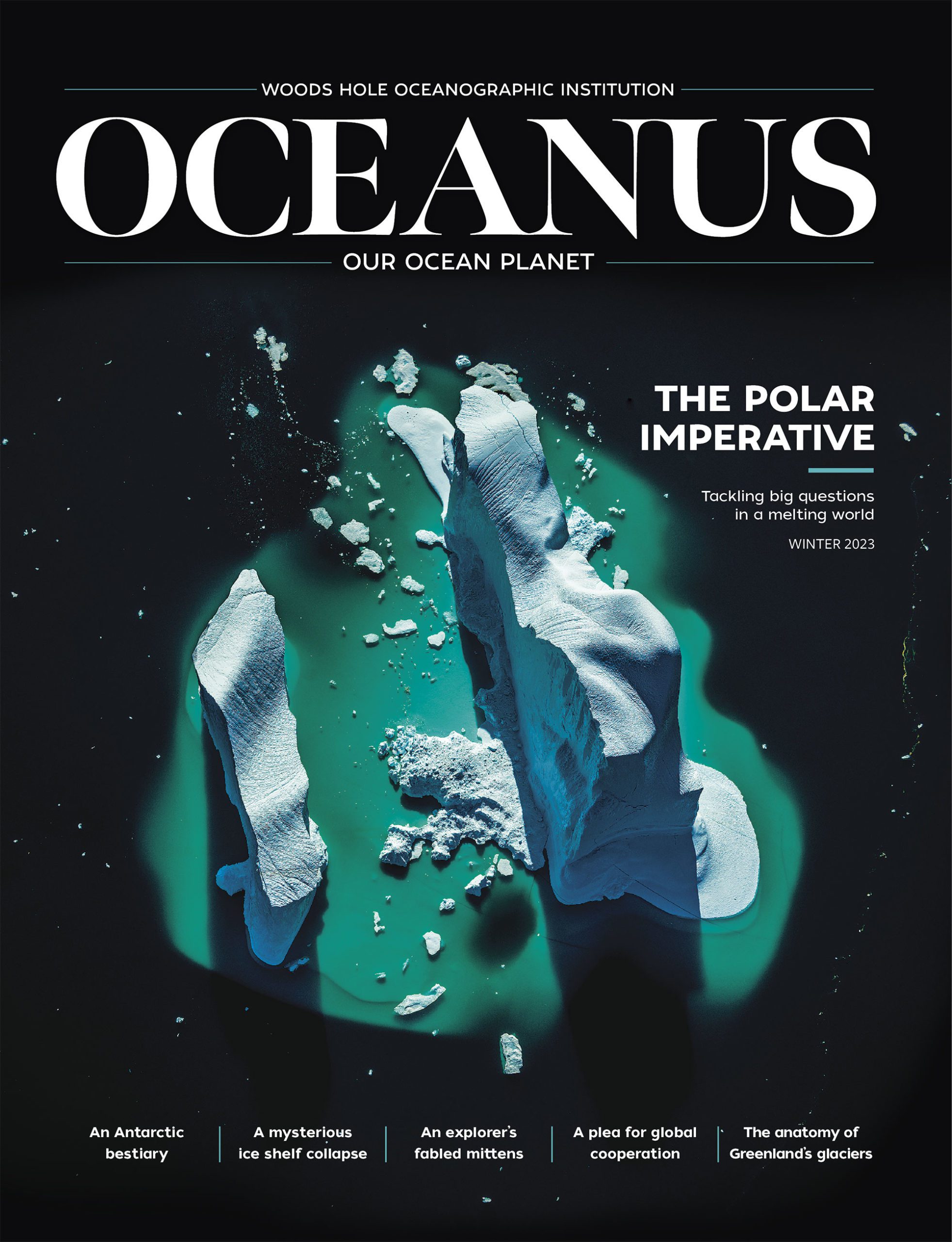 This article printed in Oceanus Winter 2023
This article printed in Oceanus Winter 2023
Estimated reading time: 16 minutes
Chris Tanner knew it was going to be a bad year. Only a fraction of the usual spring rains had fallen on his farm in northwestern Kansas and the summer heat was dry enough to crack the ground. Even his usually resilient wheat crop was struggling in the drought.
“It’s hard to go out and watch a year’s worth of work just wither away,” said Tanner, whose family has been farming in Norton, Kansas for four generations.
In 2022, the western portion of the state was facing severe drought conditions and many farms lost their entire crops. Even Tanner, who uses no-till farming practices intended to maintain and protect the soil, had a rough time. His wheat yield dropped well below its usual level and some fields weren’t worth harvesting at all.
The processes that shape the weather patterns across Kansas and the rest of our globe begin thousands of miles away at the planet’s poles. Heat exchanges in the Arctic and Antarctic drive cycles of atmospheric and oceanic movement that, for example, carry rainfall across the Midwest or create Europe’s temperate winters.
But the poles are changing rapidly as we continue to add unprecedented amounts of carbon dioxide to our atmosphere. Rising temperatures and melting ice have the potential to disrupt the systems we depend on. Despite the distance between Kansas and the Arctic, the future of Tanner’s farm—and of many areas around the globe—are intertwined with the fate of our planet’s poles. It is imperative that we understand the changes that we are causing in the Arctic and Antarctic and the ripple effects they will have on all of us if we don’t act to mitigate our impact on the planet.
A more volatile atmosphere
At the same time as Tanner’s farm was parched in the Midwestern U.S., parts of Europe and China were also in the throes of record-breaking droughts. The north polar jet stream, a powerful current of air in the upper atmosphere traveling eastward around the Northern Hemisphere, was stuck in a particular pattern that held warm, dry air in these places and deflected potential rain around them.
“There was a big northward swing over the western half of North America, so all the storms were getting steered up into the Pacific Northwest and Canada, completely avoiding the Western and Midwestern states,” says Jennifer Francis, a senior scientist at the Woodwell Climate Research Center. “That led to this extreme drought.”
“It’s hard to go out and watch a year’s worth of work just wither away.”
— Kansas farmer Chris Tanner
The polar jet stream exists because of the temperature difference between the Arctic and lower latitudes. Cold, dense air sinks over the frigid Artic, creating an area of lower pressure, and rising warm air tries to flow north to fill that space. This south-to-north air current is deflected sideways by the Earth’s rotation, creating the west-to-east flowing jet stream.
But the Arctic is warming alarmingly quickly. In addition to increased heat from the atmosphere, warmer water from southern latitudes is flowing into the Arctic Ocean, says Dylan Oldenburg, a postdoctoral researcher at WHOI who has been working to quantify Arctic Ocean warming and understand the mechanisms behind it. These warmer waters speed up the melting of Arctic sea ice, which diminishes its ability to reflect the sun’s heat away from the planet.
“Sea ice loss used to be mainly linked to heat transferred from the atmosphere,” Oldenburg says. “But in recent years, the ocean heat transport has increased a lot, and that has caused very dramatic, rapid sea ice loss.”
Sunlight that used to reflect off white ice is now being absorbed by the darker ocean, an effect similar to that of wearing a black T-shirt on a sunny day. The result is that the Arctic is warming about four times faster than the rest of the world, according to recent research. And that means the temperature difference between the Arctic and lower latitudes—the gradient that powers the jet stream—is shrinking.
Much like a river, the jet stream’s path can wander. And while a rushing river’s path will be fairly straight, a slower current will meander more widely. Some researchers theorize that Arctic warming will slow the jet stream, making it more likely to form large, wavy patterns that trap weather in place for weeks at a time.
“When the waves in the jet stream are little, we get rapid weather changes—you get some rain, then it’ll be nice for a few days—but when they’re big, they can be very persistent,” Francis says. “And that leads to very persistent weather patterns, whether it’s hot and dry, stormy, or cold.”
In February of 2021, a particularly large southern dip in the jet stream pulled frigid Arctic air south and trapped it over Texas for several weeks, resulting in widespread power outages and more than 200 deaths. Jet stream meanders during the 2022 summer held warm, dry air in place over the Midwest and several other places, causing multiple droughts around the world. A warmer Arctic, driven by rising ocean temperatures, could make these patterns more likely, or even draw the whole jet stream farther north, but researchers are still trying to figure out when and how these changes could occur.
Currently, changes in the jet stream are still within the range of natural variation, says WHOI scientist Sarah Das, but that doesn’t mean they’ll stay there.
In a project led by one of her graduate students, Matthew Osman, Das and her colleagues were able to reconstruct the past 1,250 years of jet stream movement using the clues held in ice core samples from the Greenland ice sheet. They found that the jet stream has been shifting north in recent decades.
“While the changes we’re seeing now are real and big, they’re not outside of the normal variability of this 1000-year period, which thus far has been masking the effect of human-caused warming,” Das says. “This provides a little bit better historical context for the changes we’re seeing, but it doesn’t invalidate that we’re seeing changes.”
The researchers also ran some climate models, which incorporate both oceanic and atmospheric changes, into the future and found that in high-warming scenarios, the jet stream could escape its historical boundaries by 2060.
“In the next few decades, under warming scenarios that we’re likely to find ourselves in, we expect to see the jet stream jump out of its normal range and into an even more extreme mode with changes in intensity and position,” Das says.
It’s a possibility that could increase the likelihood of persistent droughts, heat waves, floods, and even severe cold spells across various parts of the Northern Hemisphere.
Slowing circulation
Ocean circulation patterns, which transport large amounts of heat and nutrients around the globe, also depend on stable polar systems to maintain the balance we’re accustomed to. These massive flows are driven by winds, the earth’s rotation, and, near the poles, the sinking of vast quantities of water.
This is particularly important in the North Atlantic, where warm surface waters from the south encounter chillier temperatures. As these waters cool, they sink to the depths—cold water is denser than warm—and head back south along the ocean floor. This conveyor belt of water that loops through the entire Atlantic is known as the Atlantic Meridional Overturning Circulation, or AMOC for short.
“It basically brings water all the way from the South Atlantic, across the equator, into the North Atlantic and dumps it in the North Atlantic subpolar region between Canada, Greenland, and the U.K.,” says Nick Foukal, a physical oceanographer at WHOI. “That’s what warms the ocean in that region.”
The atmosphere picks up this warmth and carriers it east, creating temperate winters in Northern Europe (which shares a latitude with Northeastern Canada). The AMOC also influences rainfall south of the Sahara, the Indian summer monsoon season, and Atlantic hurricane formation.
But the addition of significant amounts of freshwater from melting ice (both glaciers and sea ice) has the potential to disrupt this system. A large enough influx of freshwater in the North Atlantic could change the salinity of the surface waters to the point where they are not dense enough to sink. That freshwater would sit on top of the ocean water, preventing it from releasing heat to the atmosphere. The result would be the AMOC slowing down or even, in the most dramatic scenario, stopping altogether.
“The circulation we’re talking about is about 20 times the flow of all the rivers in the world combined—the fact that we can measure it at all is remarkable, and we’ve been doing that since 2004.”
—WHOI scientist Nick Foukal
Recent reports from the Intergovernmental Panel on Climate Change highlighted the very real possibility of the AMOC weakening in the coming decades. But when and how it could collapse entirely is still unclear: we only have about 20 years of direct observations of the AMOC, so it’s hard to predict how this complicated system will change in the future, Foukal says.
“The circulation we’re talking about is about 20 times the flow of all the rivers in the world combined—the fact that we can measure it at all is remarkable, and we’ve been doing that since 2004,” Foukal says. Researchers have used a combination of mooring arrays, profiling floats, satellites, and shipboard measurements to keep an eye on the massive current. “To infer things about AMOC further in the past, we use proxies, like patterns in ocean sediments, but there’s a lot of uncertainty in that.”
Foukal is trying to understand the biggest sources of freshwater in the North Atlantic. He has deployed both surface drifters and profiling floats around Greenland in an effort to track meltwater flows that could impact the AMOC. The melting glaciers in Greenland are certainly contributing, but Foukal thinks the majority of freshwater is coming from further north.
“Greenland melting is important, but the question is whether it’s a large enough volume of water compared to the ocean currents,” Foukal says. “I’m of the opinion that a lot of the freshwater that we’re measuring is actually coming from the Arctic through the Fram Strait, which is in northeast Greenland.”
Foukal is also looking into the current along the Labrador Shelf in western Canada. Some Arctic meltwater flows along the shelf, but researchers don’t know how much of it enters the Labrador Sea to interact with large circulation patterns. Foukal is installing several moorings and three WHOI-designed SALPS—Submerged Autonomous Launch Platforms that will release drifters into the current every 15 days—to try to get a better picture of what’s happening in that area.
“There are just so many open questions,” Foukal says. “The ocean is incredibly important to our current climate patterns, and something we take completely for granted.”
Uncertainty in the Southern Ocean
With all the attention being paid to the Arctic, it’s easy to forget about melting on the other side of the planet. Antarctica and the Southern Ocean also fuel important global oceanic and atmospheric processes. But right now, we have limited observations in the Southern Ocean, making it difficult to predict how changes in Antarctica will play out across the world.
“Things happening in Antarctica aren’t going to stay there,” says WHOI physical oceanographer Viviane Menezes. “Antarctic bottom water flows into every other ocean basin, and if we change those currents, the changes are going to propagate through the ocean and the atmosphere.”
“Things happening in Antarctica aren’t going to stay there.”
—WHOI physical oceanographer Viviane Menezes
Antarctic bottom water is formed in four places around Antarctica, where strong, frigid winds blow across the continent, causing the ocean surface to freeze. The freezing process leaves behind cold, extremely salty water that sinks to the very bottom of the ocean. Eventually, it flows into the Atlantic, Pacific, and Indian oceans, carrying oxygen and nutrients and playing its part in regulating our global climate.
These deep waters have been getting noticeably warmer and less salty. A study led by Menezes and fellow WHOI scientist Alison Macdonald showed that Antarctic bottom water sampled between the southern continent and Australia had freshened four times faster between 2007 and 2016 than it did in the previous decade.
The researchers speculated that the influx of freshwater came from a collision between an enormous iceberg and an Antarctic glacier, which knocked a 1,000-square-mile piece of the glacier into the sea in 2010. Glacial calving events have become more common in Antarctica and melting is increasing, pouring more freshwater into the Southern Ocean and potentially slowing the formation of Antarctic bottom water. Researchers don’t yet know all of the repercussions that this could have for global circulation patterns and the myriad systems that rely on them.
“The Southern Ocean is absorbing much of the heat and carbon dioxide in the atmosphere and putting part of it into the Antarctic bottom water,” Menezes says. “As this water becomes less dense, it’s not sinking as deeply. And that has implications for circulation of carbon and heat, and ocean processes at a global scale.”
Alan Condron, a climate scientist at WHOI, has been working on a modeling effort to better understand what changes in the Antarctic could mean for the rest of us. He says most existing climate models don’t do a good job simulating the Antarctic ice sheet.
“This might sound ridiculous, but the Antarctic ice sheet in these models doesn’t change shape,” Condron says. “It can’t get smaller, it can’t collapse.”
Condron’s modeling project, led by doctoral student Shaina Sadai, incorporates a more realistic model of the Antarctic ice sheet into global climate models. Their simulations show that significant amounts of freshwater entering the Southern Ocean can stratify the water column, keeping layers from mixing together. The freshwater sits at the surface and freezes, leading to massive amounts of sea ice growth and dramatic cooling over and around the Antarctic ice sheet.
Deeper in the water column, however, the ocean gets warmer. And since large parts of the West Antarctic ice sheet actually sit on the seafloor, the warming water melts this bottom section faster, adding even more freshwater to the system and threatening to collapse the ice sheet from below. The future stability of the ice sheet depends on whether or not the surface cooling can sufficiently compensate for warming and melting at depth, the researchers say.
In their model, Condron and Sadai could see the effects of changes in Antarctica cascading across the planet. Particularly in the Southern Hemisphere, the meltwater had a cooling effect, delaying the rate of global warming by several decades.
“We also see that large changes in atmospheric circulation—especially shifts in rainfall patterns—with drying over places like California, and a northward shift in rain-producing zones near the equator, all contributed to the melting of the Antarctic ice sheet,” Condron says. “So it really is having a global impact on the climate system.”
While the Southern Hemisphere cools, the researchers have found the opposite effect in the Northern Hemisphere. Their most recent modeling experiments show warming in the North Atlantic increasing, with temperatures in some places 2 to 3 degrees Celcius (3.6 to 5.4 degrees Fahrenheit) higher than what is currently predicted for the year 2100. The researchers are still unpacking the mechanisms behind these changes, but it all seems to be triggered by melting in the Southern Ocean.
“We’re working now to figure out why the North Atlantic is becoming warmer in our simulations, whether it’s all ocean circulation or whether the atmosphere is contributing,” Condron says. “But by adding Antarctic meltwater to our model, we’ve essentially kicked the climate system into doing something different.”
Our melting world
Early last spring, Tanner started selling his cattle.
The drought in Kansas remained and the grazing lands were bare—there was nothing for the animals to eat. It was a herd he had originally bought from his parents, who had kept the best females to breed each year since the 1980s.
“When you’ve had a closed herd for 40 years, and you have to take them to town and sell them because there’s nothing to feed them, well, it’s basically a lifetime of work,” Tanner says. “You can’t get those genetics back.”
Fortunately, there was a break in the weather. Enough rain fell that Tanner was able to keep about half of his animals, and he remains optimistic that sound agricultural practices will help his farm stay productive even in tough years. Any major equipment upgrades, though, will have to wait until the next good harvest.
And in some ways, Tanner is right to be optimistic. At the local level, sustainable farming practices will go a long way to help farmers adapt in a warming climate, and crop insurance will help those in the U.S. recoup losses in a bad year. But that means we need to ensure that the good years continue to outnumber the bad.
As the poles continue to melt, there is an urgent need for both observational and modeling data to help us better understand the implications for our climate system. The cascading effects of warming in the Arctic and Antarctic could have global repercussions for food production as well as the spread of diseases and political unrest. The more we know about these systems and their tipping points, the more likely we are to be able to avoid the worst outcomes.
There are many possible futures in our melting world, and there’s still time to choose a better one.

